
4WD vs. AWD. Another age old question about the difference.
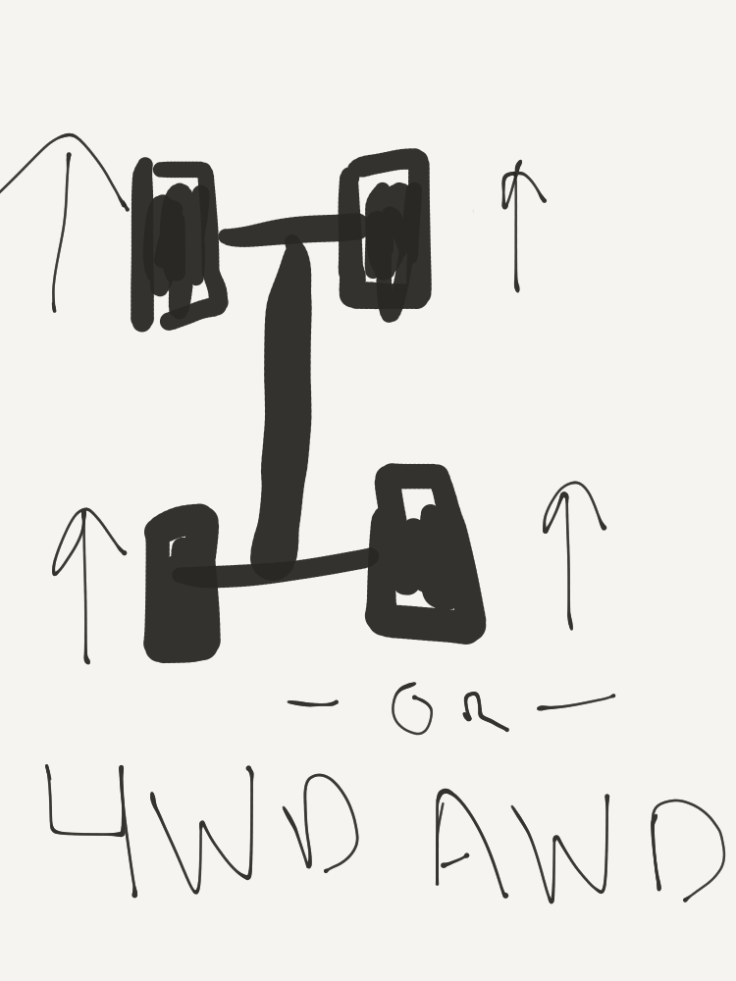
Essentially, both have the same general function, turning all four wheels at the same time, through various means. It’s basically the same system, with different means to accomplish the same goal. So in this, “‘X’ Explained,” it will feature some more crude drawings and factual information!
As always, comments are welcomed, if you have any additional information that will add to the quality of this post, drop it in the comments.
4WD Explained
4WD or four wheel drive, is the older way to turn all four wheels. Typically, 4WD is used in more trucks and SUVs (Wrangler, Tahoe, 4Runner, F150). Crossovers or CUVs (Traverse, Highlander, newer model Rav-4), ride on a more car-like platform, which makes AWD the better option. The basic explanation for four wheel drive is as follows in cleverly thought out bullet points.
- The Power goes to the Transmission
- The Transmission sends Power to the Transfer Case
- The Transfer Case evenly sends Power to the Axles
- And all four wheels turn
- And they turn at the same speed
This all sounds good, until you try to turn of course. The issue is, its harder to corner when all of the wheels are turning at the same speed. To fix this, most four wheel drive systems have either a manual shifter or buttons/switches, that allow the driver to select the various settings. The manual system might have a lever or shifter to switch between the Hi and Lo positions. In the even that you are driving under normal conditions, the driver can have the vehicle in 2WD but in inclement conditions, such as snow or the weekend off road expedition, you can select four wheel drive. When he vehicle is in two wheel drive, it will behave differently when cornering and the system is less prone to damage. Why? Because there are less moving parts to destroy.
When compared to more advanced systems, the manual shift is archaic. These systems use buttons and switches to achieve the same task. These switches typically have the various settings that activate at the push of a button. Of course, these setups tend to be electronically managed which can be an issue if some of the electronics go out.
Four wheel drive, as I mentioned in the past couple of paragraphs, has various settings for various conditions. You have four Hi/Lo and in some instances two Hi/Lo. Hi allows the power split between the wheels to be less even. While this doesn’t completely make the vehicle easier to deal with in the corners, but it helps to a degree. The Lo setting acts like a locked system. This allows for better off road capabilities, but you wouldn’t want to engage in a high speed police chase in this setting.
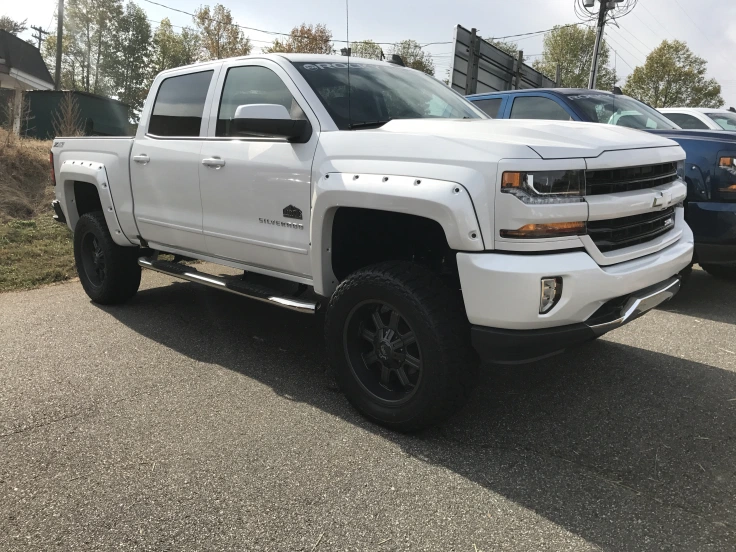
Lastly, most four wheel drive systems have locking hubs. Locking hubs actually engage the four wheel drive. On older systems, these hubs had to locked manually, which basically meant you would have to manually engage the hubs. In other words, you could shift into four wheel drive all day, everyday, but if the hubs aren’t locked, your not in four wheel drive.
AWD Explained
AWD or All Wheel Drive does the same thing as 4WD, but the main difference is that All Wheel Drive is on all of the time and it is safe to say that it is more versatile. The all wheel drive system is used in various vehicles, from entry level vehicles, to import tuners, to super and hyper cars.
The diffferent types of AWD setups are mechanical and electronic. Mechanical AWD uses a trio of differentials (boxes of gears, which will be explained at some point in life), that split the power between the wheels. Here goes some more bullet points:
- Power goes to the center differential
- The center differential sends power to split between the front and rear axles
- The power sent to the axles goes thru the front and rear differentials
- The front and rear differentials sends power to the wheels
- MAXIMUM TRACTION ACHEIVED
Electronic AWD uses sensors and the cars ECU or engine control unit, to transmit power to the wheels. The sensors detect which wheel has the least amount of grip and sends power to that specific wheel, to regain traction. How do the sensors detect where to send the power? By various and numerous calculations that aren’t understood to the average man.
AWD systems are used in various applications. It’s not as involved as four wheel drive. While you have to shift or engage four wheel drive manually, all wheel drive is constant. That eliminates human error, especially when considering cars like the Audi R8 and Nissan GTR, which use advanced all wheel drive setups. The last thing you would want to do is wreck your drivetrain because you didn’t shift into the proper setting.
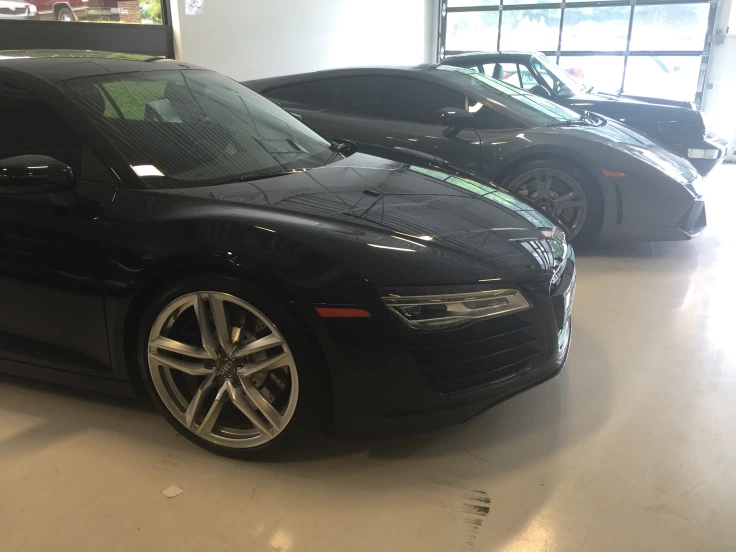
Another reason why all wheel drive is better for high performance rides, is the fact that the rear wheels alone really cant handle the high power. It’s as simple as taking a RWD Huracan and an AWD Huracan with the same specs, cutting off traction control and ignoring launch control. The AWD Huracan would probably smoke all four tires, but would gain traction quicker than the RWD version. That’s the reason why Chevy was considering AWD for the C8 Corvette.
Which Works of You?
To make this as simple as possible. If you want to have the greatest off road expedition known to man, find you a proper 4WD vehicle. If you want to make a trip to the grocery store, AWD. If you want to win a WRC stage, AWD. If you want to drive the majority of today’s supercars, AWD. If you need to navigate thru inclement weather, either one will get the job done.


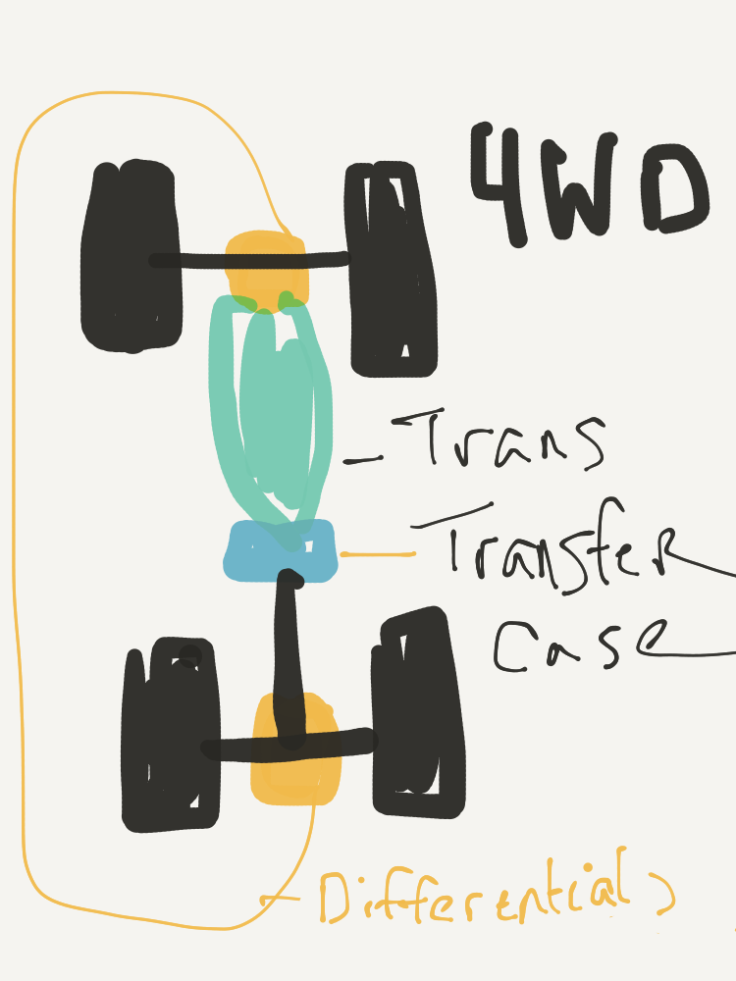
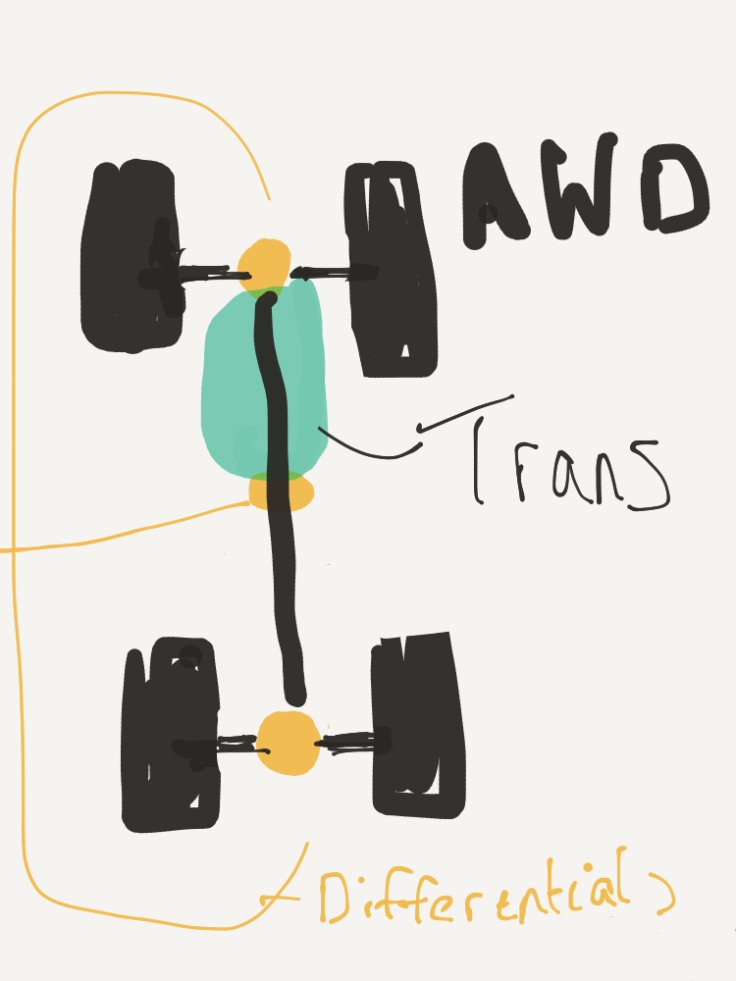

Comments?